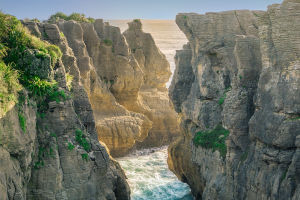The Dolomites are a stunning mountain range in northeastern Italy, offering not only dramatic landscapes but also a wealth of outdoor activities. For anyone looking to immerse themselves in nature, the Dolomites are a must-visit.
Whether we’re into hiking, skiing, or simply soaking in the natural beauty, this UNESCO World Heritage site has something for everyone. Here’s your ultimate guide with all the essential information to make the most of your trip!
Location and Geography: How to Find the Dolomites
The Dolomites stretch across the provinces of Belluno, South Tyrol, and Trentino in northeastern Italy. These mountains are part of the Alps and include famous peaks such as the Marmolada, which stands at 3,343 meters (10,968 feet) above sea level. This vast mountain range covers about 141,902 hectares and is bordered by the Adige River to the west, Piave River Valley to the east, and the Puster Valley and Val Sugana to the north and south.
For those planning a trip, the Dolomites are accessible by car from Venice (approximately 2 hours), Bolzano (1 hour), and Verona (2.5 hours). Trains from major cities like Venice and Verona also reach Bolzano, which is a great base for exploring the Dolomites. From there, we can rent a car or use local bus services to reach specific hiking trails or ski resorts.
Best Time to Visit: Seasonal Highlights
The Dolomites are a year-round destination, each season offering something unique. If hiking is our thing, the best months to visit are from June to September, when the weather is mild and the trails are fully accessible. However, to avoid large crowds, visiting in May or October is also a good option.
For skiing enthusiasts, the Dolomites become a winter wonderland from December to March. Cortina d'Ampezzo, Val Gardena, and Alta Badia are among the best ski resorts here, attracting visitors from around the world. Ski pass prices vary, with the Dolomiti Superski Pass (valid for 12 ski areas) ranging from $65 for a one-day pass to $400 for a 6-day pass.
Entry Fees and Open Hours: What to Know
There are no entry fees for visiting the Dolomites' natural areas, but some attractions and parks may charge a small fee. For instance, the Dolomites’ cable cars and lifts cost between $15 and $55 for a single ride, depending on the destination. The Marmolada cable car, one of the highest points in the Dolomites, offers round-trip tickets for $45.
The Dolomites are accessible year-round, but some hiking trails and cable cars are seasonal. Generally, most tourist services operate from mid-May to late October, while ski lifts are open from December to April. For a full list of open attractions, it’s recommended to check the official Dolomites website before traveling.
Getting Around: Transportation in the Dolomites
While we can explore the Dolomites by car, there are also excellent public transportation options available. From Venice, Bolzano, or Trento, buses and trains frequently run to various towns in the Dolomites. For instance, from Bolzano, we can take a bus to Cortina d'Ampezzo (around 2 hours). Within the Dolomites, local buses connect popular hiking areas and ski resorts, making it easy to get from one destination to another.
If we prefer more flexibility, renting a car is a great option. However, during the winter months, snow chains are required in some areas, so it's important to check the road conditions before driving. Also, be aware that some mountain roads may be closed during heavy snowfall.
What to See and Do: Activities for Every Season
There’s no shortage of activities to keep us busy in the Dolomites. For hikers, the Alta Via 1 trail is a must-do. This iconic 150-kilometer (93-mile) trail takes around 10 days to complete and passes through some of the most spectacular mountain scenery in Europe. Shorter hikes, such as the Tre Cime di Lavaredo loop, are also popular and offer stunning panoramic views of the surrounding peaks.
For winter sports, Cortina d'Ampezzo is one of the most famous ski resorts in the Dolomites. It offers a range of slopes for all skill levels, with ski passes starting from $50 per day. Besides skiing and snowboarding, other winter activities include snowshoeing, ice climbing, and even tobogganing.
If we’re interested in culture, the Dolomites are rich in history. The region is dotted with quaint villages where we can learn about local traditions, visit museums, and explore historical battle sites, as the Dolomites were a key battleground during the conflict.
Practical Tips: Make Your Visit Even Better
1. Pack Smart: The weather in the Dolomites can be unpredictable, even in summer. Always bring layers, a waterproof jacket, sturdy shoes for hiking, and sunscreen.
2. Altitude: The Dolomites are high, so be mindful of altitude sickness. Take it slow, drink plenty of water, and rest if you feel dizzy or short of breath.
3. Book Ahead: In peak seasons, accommodations can fill up fast, especially in popular towns like Cortina d'Ampezzo and Ortisei. Booking accommodation and ski passes ahead of time can save us from disappointment.
4. Stay Safe: The Dolomites are remote, and some hiking trails can be challenging. Always carry a map, compass, or GPS, and let someone know your plans before heading out.
The Dolomites Await!
The Dolomites offer an experience like no other, with their awe-inspiring landscapes, endless outdoor adventures, and a rich cultural heritage. From scaling towering peaks to immersing ourselves in the tranquility of alpine valleys, each moment in this stunning region is bound to leave us with lasting memories.
As you plan your journey, keep these essential tips in mind to ensure a smooth and memorable trip. The Dolomites are ready to reveal their beauty, and we can’t wait to experience it together. Safe travels and happy exploring, Lykkers!


